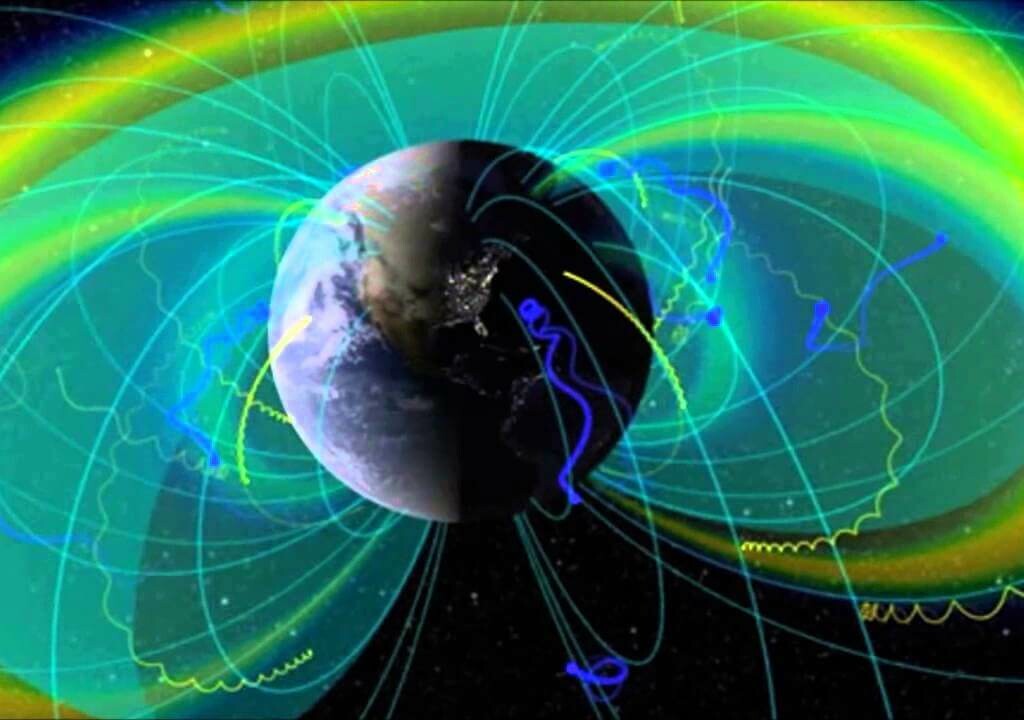Incredible! The mysterious third Van Allen belt could change the future of space exploration. Discover how this temporary phenomenon revealed hidden secrets about radiation and the protection of our satellites.
The Van Allen Belts: Earth’s Invisible Shield and the Third Belt
The regions known as the Van Allen belts are composed of charged particles, which become trapped by Earth’s magnetic field. This phenomenon creates a barrier that protects our planet from dangerous cosmic rays and solar wind.
Typically, Earth is surrounded by two belts: an inner belt, closer to the planet and an outer belt, which extends up to about 36,000 miles (58,000 km) from Earth’s surface. These zones are crucial for the protection of our planet, but they also pose a risk to satellites and astronauts passing through these areas, as radiation can damage electronic components and endanger human health.
In 2013, an unexpected discovery surprised the scientific community: NASA’s Van Allen Probes detected a third radiation belt, which appeared between the two previously known belts.
This newly discovered third Van Allen belt was caused by a coronal mass ejection from the Sun. Unlike the two permanent belts, this belt lasted only a month, but its presence shed new light on how high-energy particles can interact with Earth’s magnetic field.
This finding not only expanded our knowledge of radiation belts but also underscored the need to improve protection technologies for satellites and space missions. Future missions in geostationary orbit, where many communication satellites operate, will need to consider these phenomena to avoid radiation damage.
Space Exploration and the Third Belt
The discovery of the third belt within the Van Allen belts had a significant impact on space science. Before 2013, these belts were believed to be relatively stable, but the temporary appearance of a third belt showed that they are more dynamic and complex than previously thought.
This new understanding has led scientists to reevaluate how charged particles behave in near-Earth space and how these interactions can affect both technology and human life.
For space exploration, this discovery presents a greater challenge in protecting satellites and astronauts. Future missions will need to account for the possibility of similar phenomena, especially during periods of intense solar activity.
The third belt demonstrated that radiation in space can change rapidly, increasing the risks for missions in geostationary orbit and beyond.
Furthermore, this finding has spurred the development of new radiation shield technologies and early warning systems to detect changes in the radiation belts before they affect satellites.
It has also encouraged additional research to better predict solar activity and its impact on Earth’s space environment. These advances are not only crucial for protecting our space infrastructure but also for ensuring the safety of astronauts on missions beyond Earth’s orbit, such as future explorations to the Moon and Mars.
What the Third Van Allen Belt Reveals About Our Planet
The discovery of the third Van Allen belt in 2013 reminds us that space still holds secrets that challenge our understanding. This finding revolutionized the way we perceive radiation belts and their effects on Earth and space exploration.
In addition to highlighting the need to better protect our satellites and astronauts, it invites us to reflect on the interconnectedness between the cosmos and our planet.
As science advances, so does our ability to adapt to the challenges of the universe. Space, in its vastness and complexity, continues to be a realm of mystery and discovery.
The Van Allen belts, once thought to be simple barriers of radiation, now stand as proof of the ever-evolving nature of our knowledge and the protection that Earth offers amidst the vast cosmos.





